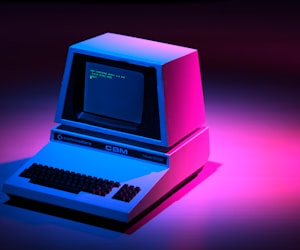What causes a laptop’s screen to suddenly have a tiny black spot in the middle of it and is there anything I can do about it?
- Thomas
This question was answered on June 7, 2013. Much of the information contained herein may have changed since posting.

The black spot you refer to is most likely what we refer to as a ‘dead’ or ‘stuck’ pixel
and depending upon where on the display it is, it can be a major irritation.
Just like when your car’s windshield gets a stone chip right in your primary line of sight, it’s a constant annoyance.
The actual technology used in your display would determine whether a black pixel is dead or stuck, so I’ll generalize in my explanation.
There are various types of display technologies these days, but the most commonly used in laptops are LCDs (Liquid Crystal Display) which uses liquid to control how much light is allowed to pass to the color display layer.
When you get a constant black dot, a defect in the electronics that usually cause that pixel to change colors is stuck in the off position, which does not allow any light to pass through.
It’s kind of like a single light bulb that has gone out in a massive Las Vegas casino marquee.
Your laptop’s screen has a single light source that is modified by the liquid so your eye sees different colors, so unfortunately, it’s not as simple as replacing a single light bulb in a massive marquee.
In the early days of the LCD boom, we saw a much larger percentage of our customers that suffered this type of irritation, but much less so with the current displays.
If it’s only a single pixel, it’s virtually impossible to be from something you did and more likely to be the failure of a single tiny transistor in your display.
If you had accidentally poked the screen with something sharp, you would notice a much larger area of dead pixels and likely physical damage to the surface of the screen.
There are various websites that claim to have procedures to attempt to fix both scenarios, but I can’t recommend any of them specifically because each situation is unique. Some suggest that pressing on the pixel with a blunt object can sometimes return it to working order, but if done wrong, it can create even more damage.
A stuck pixel that’s a color other than black or white has the highest possibility of being renewed by using a program that flashes every pixel repeatedly, but I wouldn’t count on any miracles.
Most manufacturers have a specific policy regarding what is considered a factory defect and I’m not aware of any of them that views a single dead pixel as a defect.
If you start to see a cluster of pixels going dead, that would be an indication of a malfunctioning display and should be replaced by the manufacturer if it’s still under warranty.
If it’s past the warranty coverage, I’d suggest that you do a search on the Internet on your exact make and model to make sure there wasn’t a recall of some sort that might provide out of warranty coverage.
If none of the online DIY fixes work and you have no warranty coverage, you only have two options: live with it or spend the money to replace the display panel.
About the author
 Ken Colburn of Data Doctors on June 7, 2013
Ken Colburn of Data Doctors on June 7, 2013
Need Help with this Issue?
We help people with technology! It's what we do.
Contact or Schedule an Appointment with a location for help!

